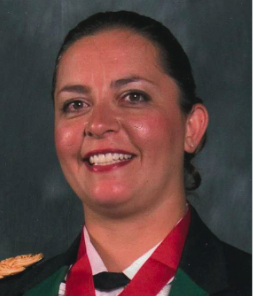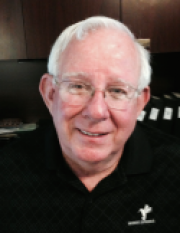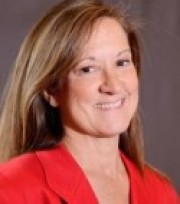Engineer, Educator, West Point Graduate
Mentor – Christella Chavez
 Christella grew up in a rural, largely Spanish speaking community in northeastern New Mexico with a very substandard school system. Her home life was easily characterized as dysfunctional and disadvantaged, as her father left the family when she was only 3 years old, and her mother was diagnosed with severe mental illness and was hospitalized most of her life. Chriss and her three siblings were raised by her maternal grandmother in an old adobe home with dirt floors, wood-burning stoves, and no indoor plumbing. She and her brother began selling newspapers when they were 8 and 9 to help raise money to feed herself and her siblings. By all accounts, Chriss would have been labeled as poor, disadvantaged and not expected to amount to much. Chriss overcame these disadvantages because she loved to learn. She learned to read at age 3 (her grandmother was a teacher), and worked extremely hard in school. She had caring teachers who saw her potential, and pushed her to excel in academics. They also inspired her to build a record of achievement that led to Chriss being accepted at West Point, at age 17, where she received her BS in Engineering, and was commissioned a 2LT in the military police corps.
Christella grew up in a rural, largely Spanish speaking community in northeastern New Mexico with a very substandard school system. Her home life was easily characterized as dysfunctional and disadvantaged, as her father left the family when she was only 3 years old, and her mother was diagnosed with severe mental illness and was hospitalized most of her life. Chriss and her three siblings were raised by her maternal grandmother in an old adobe home with dirt floors, wood-burning stoves, and no indoor plumbing. She and her brother began selling newspapers when they were 8 and 9 to help raise money to feed herself and her siblings. By all accounts, Chriss would have been labeled as poor, disadvantaged and not expected to amount to much. Chriss overcame these disadvantages because she loved to learn. She learned to read at age 3 (her grandmother was a teacher), and worked extremely hard in school. She had caring teachers who saw her potential, and pushed her to excel in academics. They also inspired her to build a record of achievement that led to Chriss being accepted at West Point, at age 17, where she received her BS in Engineering, and was commissioned a 2LT in the military police corps.
After completing her active military commitment, she worked in private industry for Texas Instruments, Raytheon and Ford Motor Company while she continued to serve her country in the Army Reserves. She served proudly for over 23 years in military police and field artillery. While at Ford, she earned an MBA at the University of Tulsa majoring in Management Information Systems and International Business. After twenty years in industry, she decided to go back to school and is completing her Doctorate in Engineering at the University of Oklahoma’s Tulsa campus. While working on her doctorate, Chriss was named one of the 2013 Outstanding Collegiate Members of the Society of Women Engineers (SWE), a group that encourages women to achieve their full potential as leaders and engineers and has served two years as a SWE regional governor and two terms as a senator. She is very active in the Institute of Electrical and Electronics Engineers (IEEE) and serves as Region 5 Area Chair. She is also active in the Hispanic community and has served as a member of the board of the Tulsa Hispanic Chamber of Commerce and a member of the national board of the Society of Hispanic Professional Engineers.
Throughout her career, Chriss has been interested in education and has been active in groups that encourage young people to study engineering. She created the First Robotics program at Cascia Hall High School, where her two sons attended. Chriss is also one of the many community leaders supporting the development of robotics programs for students as young as grade school. These programs are a way to teach kids how engineering is used to solve problems by giving them projects where they build things, and teach them to apply engineering principals and problem-solving skills in everyday life. She also wants students to know that engineering is not only an interesting career but also one where there is a critical shortage of qualified people: seven of the ten highest paid careers are in different fields of engineering.
Another important thing Chriss points out in her article is that testing for engineering aptitude has shown that kids from underprivileged backgrounds score higher than kids who have had more privileged upbringing and educational advantages. The reason for this unexpected result is that these underprivileged students have less fear of failure and are willing to take risks when they are given projects, where they have to solve problems on their own. Because of this testing and her own personal experience, she knows these young students should not be dismissed just because they are in low performing schools, English as a Second Language Learners, or underfunded school districts. She is collaborating with other engineers to develop programs for every district where all children, regardless of their background, are encouraged to pursue careers in engineering and science.
My Career Path
I grew up in a really small rural town in northeastern New Mexico. My high school class had 55 students and only 46 of us graduated. My father abandoned our family when I was little and my mother was in and out of institutions. So, I didn’t have any parental support and ended up being raised by my Grandmother. She was a teacher and taught me to read and write both Spanish and English by the time I went to kindergarten. I read a lot of books growing up and loved the Nancy Drew mysteries and anything that involved analysis. I could usually figure out who did it about half way through a Nancy Drew mystery. I was also lucky in that Los Alamos and the Sandia National Laboratories were located a little over an hour away. I was really intrigued by the history of these two research facilities while I was growing up and learned that some of the best scientists in the country worked there. I was good at math and science and I had teachers who gave me advanced course work and let me see how far I could go. Later the school brought in a teacher who was used to working with gifted students. The school gave everyone tests and found there was a really big group that tested with high IQs. I was fortunate to be in that group. She and other teachers who came later taught us more advanced courses. They made us do puzzles, and logic testing, and took us to the national laboratories as well as cultural events, like “The West Side Story.” I loved learning and when summer vacation came and the other girls were going to cheer camp, I went to science camp at the National Labs. I went to NMSU STEM camp, and to NM Tech for STEM camp. I participated in the Upward Bound program at Highlands University. I was starving for knowledge.
During my freshman year of high school, a recruiter came for the military academies and asked about students who might meet the academic, leadership and physical requirements. Our teachers said they had a group of them and when he presented the opportunity to me it was something that I found appealing. It was a chance to serve my country and also get a good education with all expenses paid. I applied my junior year and was accepted at West Point late in my senior year. A total of four of us in that original group were also accepted to military academies (one went to USMA the year before me and graduated, and two others went to the AFA and one of the two graduated). Nobody believed that many kids from a small, rural underprivileged school like ours could be accepted, compete, and graduate from our national military academies. Understand that our school system was one of the worst. But if you had potential, the teachers did not put boundaries on you. They moved you ahead in the classes. I took high school math in 8th grade. Besides letting us take advanced academic classes, our teachers also took us to upper level science fairs and cultural events to help us grow so they could see how far we could go. I was also an officer in our school’s Future Homemakers of America club as a freshman and worked my way up to holding a state office when I was a sophomore and junior that let me travel around the country. I later got to be Student Council President two years in a row. Being involved in these leadership positions helped me demonstrate leadership ability to the military academy recruiters.
When I arrived at West Point, I was not at an academic level to be able to compete with most of the cadets. Many came from private schools and preparatory academies and had already had classes like calculus. But I took the classes I needed to catch up and after a year I got back in the pack and made the Dean’s list. That first year was hard because I was not used to being in last place. But I knew I was never going to quit. I took classes in all the engineering disciplines and minored in political science and international relations with an emphasis on Central and South America. I already spoke Spanish and French and my first active duty post was in Panama. I understood the politics, culture, the ethnicities and the language and ended up doing two tours there. After about 6 years, I went from active duty to the Reserves for a total of 23 years of service.
My first corporate job after I left active duty was in Dallas working for Texas Instruments before I was deployed to Bosnia for a year. When I came back, the business was sold to Raytheon and I worked in manufacturing engineering, supporting telecommunications programs and military programs. I was later recruited to come to Ford in Tulsa where I worked for ten years. During that time, they paid for my MBA at the University of Tulsa where I majored in Management of Information Systems and International Business. Ford then moved me to Nashville for five years and then asked me to return to Tulsa. I knew Ford was going to close the Tulsa plant soon. But I had applied to the University of Oklahoma for their Doctorate program at the OU-Tulsa campus. When the plant closed, rather than transfer to another facility, I stayed in Tulsa and started working on my advanced degree doing my PhD dissertation on disaster recovery for wireless systems based on research I had done for the Department of Energy at the Los Alamos National Laboratory. I didn’t want to do my research and write my paper on something that was just theory. I wanted it to be practical and useful. I have also been working on small projects along the way to my graduate degree. There are more gaps in engineering research projects and all the STEM fields, than there are engineering and science researchers working to solve them. So if you are a graduate student in engineering, there are plenty of programs that need researchers that will pay you to study and earn an advanced degree.
Helping Kids Learn About Engineering and Science
I always loved working with the kids. My teachers were so good to me and helped me to learn and think outside the box. So I am motivated to develop programs that give young students that same opportunity. I know there are a lot of kids out there who can do incredible things if we just give them a pathway. That is the hardest part, creating those kinds of educational opportunities in spite of the poor and understaffed school systems. We are too used to teaching kids based on a test standard rather than teaching them how to solve an analytical problem. Seeing how engineering relates to the real world is what I know gets kids interested in education.
It is also important that kids are not labeled because of their economic situation or the limits of the school system they may attend. If we just help all of them to learn, I think they would astound us. For example, there is a mobile Fab Lab in Tulsa that teaches advanced manufacturing methods to students using things like plastic 3D printers and programmable machines. They went into poor areas of town and affluent areas and gave students design challenges and the same tools to solve the problem. They found the kids from the poor areas did way better. These kids solved the problems assigned to them faster and got to better solutions. Part of the reason was they were not afraid of failure or using the power tools, so they weren’t afraid to try different solutions and use all the different tools available to them. The more affluent kids were not as willing to try because they were afraid to be wrong and had to be pulled along. That study totally knocks out the whole stigma that kids from an underprivileged background can’t do as well in engineering. They can. They just need a pathway to succeed.
I know that if you can get kids hooked on something like robotics when they are in grade school, by the time they get to high school they don’t think it is nerdy and will follow that educational path. That is why I like to challenge them with something like robotics because you can begin kids as early as first grade. I have a girlfriend who put together projects with her two brownie troops and both ended up getting invited to the White House to show their projects. This proves that if you set the right expectations and have the right coaching and environment, kids from all backgrounds and age groups can excel. All these five and six year old girls came from different backgrounds. Some went to public schools, some went to private schools and some were from single parent families. But the common thread was they had my friend as their coach. These little five and six year olds all had simple tools and materials and they all came up with a working solution to the problem they were given. They were in fact doing real engineering.
Another example, there is a group of middle school students in a border town in Texas where there is a student who is blind. Some of the other students developed an app using the GPS in the blind student’s cell phone that helped him navigate to his classes, and that app has helped him become a successful student.
Support is More important for a Student than Aptitude
All of our minds work differently which means all of us learn differently. So teaching math should be more than just throwing a mathematical problem at someone. It needs to involve helping that student solve a practical problem they can relate to. For example, I grew up in a land locked area and always was interested in what it took to build a swimming pool. So I used simple algebraic equations to determine the amount of the materials I needed to build a certain sized pool and the amount of water it would take to fill the pool. That was a way to practically apply algebra to solve a problem that was interesting to me. Here is another example. I hated geometry. But if someone would have given me a project where I would have needed to know geometry for something like setting up a cellular base station to run my wireless gadgets, the subject would have been more interesting for me. I now use geometry in my graduate research all the time.
I believe teachers need to separate students into groups even if they are in the same classroom and challenge the ones who are ahead so they don’t get bored. But also don’t forget about those who are not doing as well and don’t set standards for them that are too low. To do this efficiently, teachers have to teach kids a practical skill set. The brownies did so well in part because my friend took this approach and had high expectations of them.
I became a member of the National Association for Engineering Education and helped develop an eighth grade engineering education assessment that relied on this principal of testing for problem solving ability and not just the ability to do mathematical calculations. We designed the test so that it doesn’t feel like you are taking a test. A student is looking at information, graphs and data that are used to solve a practical problem which is different than just giving them a mathematical problem to solve. We need to teach this because all innovation comes from problem solving. That is why many engineers develop the majority of new businesses.
Supplementing School STEM Programs
- Kids in high school should be taking all the math and science they can. But there is a real shortage of these kinds of teachers in many schools. So by not providing enough good teachers for science, technology, engineering and mathematics (STEM) courses, we are just creating this loop where the lack of good math and science teachers is leading to fewer people getting the basics they need to be able to do well in engineering classes when they go to college. This creates a shortage of engineers in this country and we end up having to attract engineers from overseas to fill job openings and foreign engineering students who can handle the math requirements to fill the classrooms in our own colleges and universities.
- The Tulsa Tech “ Project Lead the Way” is one of the best local programs supplementing high school STEM programs where they are taking teachers and giving them the skills to teach basic engineering skills in the public school systems. There is also collaboration with public schools where students can be bused to their nearest Tulsa Tech campus and take these STEM classes there and earn both high school and college credits. Because the public school teaching core is so depleted of STEM teachers, unless many kids go into the Project Lead the Way program, they are not going to get the basic classes they need to prepare themselves to enter a college engineering program. Some teachers and parents are reluctant to send their kids to these programs because they think it will lead them into a vocational career rather than a college degree. That is simply not true. The classes in fact better prepare high schools students for engineering classes in college, because they are hands-on learning.
- But even the parents who send their kids to private schools with adequate financial resources can have the same problem. My two sons went to Cassia Hall, which is supposed to be one of the elite schools in Tulsa. They did not have a STEM program. I asked the school why not and they said there was not any demand for it. This is where all the good salaries are and where all the good scholarship money is because there are real shortages of qualified engineers and scientists. So after several years of asking, I was finally allowed to bring in the STEM and robotics program. We have several engineers as mentors. We have been there for five years and now more students are taking the AP STEM classes and preparing for a career in a STEM field. Besides the basic engineering, students also have to do a business plan and develop a marketing strategy for their robot. They are also required to do outreach and teach other students. We’ve had two valedictorians in our robotics program, and many of our students will graduate from universities with their engineering degrees in 2017.
- I also provide workshops during the summer where I work with middle school students and teachers to provide hands-on STEM activities. When they later tackle a team robotic project, they know how to collaborate with their other team members and you also see that the seasoned teams help the new teams, which is totally different than what you do in competitive sports.
- Tulsa Community College classes are also valuable to many students who did not have good STEM instruction in high school. They have excellent teachers who want the kids to succeed. You have others, like me, that provide mentoring and other engineering organizations like IEEE that will provide scholarship money. Small classes at TCC help get students through the basics they must complete during the first two years of college engineering classes with a good support group of teachers. When they go and complete their four-year degree, they are at a level where they can later compete. Plus, under the Tulsa Achieves program the tuition if free to high school students in Tulsa County.
- Another thing I recommend is for students to look for an internship in the summer during your high school years. Shadow someone so they can see what an engineer does and also get to experience working in a collaborative environment.
Summary
Engineering is a career that I love where you get to solve real world problems. There are many programs where kids can get exposed to engineering principals as early as grade school. Even with the shortage of STEM teachers in many of our local school districts, Tulsa Tech’s “ Project Lead the Way” is one of the best programs supplementing high school STEM classes. Between that program and taking advantage of Tulsa Community College program, both of which are free to local students, you can make sure you are able to compete when you go for your engineering degree. So even if you come from an underprivileged family background or an underfunded school district, there is a path for you to get the STEM classes you need to get your college degree and build your own successful career in engineering. If you embrace learning, and challenge yourself, I think you will be amazed at what you can achieve.
US Bureau of Labor Statistics for Engineers
The median annual wage of all engineers in 2015 was $95,900. The top ten percent earned more than $150,800 and the bottom ten percent earned $52,010.
Some of the highest paying careers in the world are found in engineering. Engineering is widely considered as one of the most lucrative and in demand career choices, with multiple engineering disciplines and job types, as well as salaries that can exceed $100k per year once the engineer has some experience behind them¹. Engineers tend to earn in excess of the national average salary and this is expected by some reputable organizations to continue in the future¹. In fact, Engineering degrees make up 10 of the top 17 highest paid degrees at the time of this survey in 2015.






